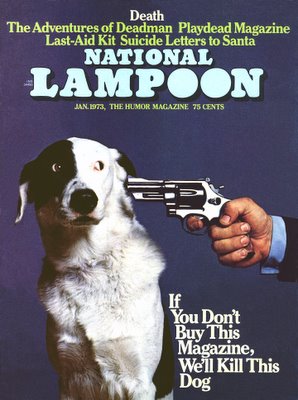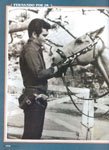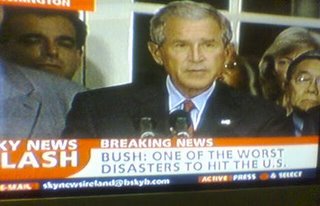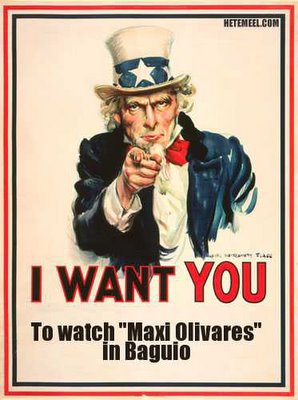Ideas???

Here are the other NYT ideas:
Dialing Under the Influence
Do-It-Yourself Cartography
Dolphin Culture
Econophysics
Embryo Adoption
Ergomorphic Footwear
Fair Employment Mark, The
False-Memory Diet, The
Fleeting Relationship, The
Folksonomy
Forehead Billboards
Gastronomic Reversals
Genetic Theory of Harry Potter, The
Global Savings Glut, The
His-and-Her TV, The
Hollywood-Style Documentary, The
Hypomanic American, The
Infrared Pet Dry Room, The
In Vitro Meat
Juvenile Cynics
Laptop That Will Save the World, The
Localized Food Aid
Making Global Warming Work for You
Medical Maggots
Microblindness
Monkey Pay-Per-View
National Smiles
Open-Source Reporting
Parking Meters That Don't Give You a Break
Playoff Paradigm, The
Pleistocene Rewilding
Porn Suffix, The
Preventing Suicide Bombing
Readable Medicine Bottle, The
Republican Elitism
Robot Jockeys
Runaway Alarm Clock, The
Scientific Free-Throw Distraction
Seeing With Your Ears
Self-Fulfilling Trade Rumor, The
Serialized Pop Song, The
Sitcom Loyalty Oath, The
Solar Sailing
Sonic Gunman Locator, The
Splogs
Stash Rocket, The
Stoic Redheads
Stream-of-Consciousness Newspaper, The
Subadolescent Queen Bees
Suburban Loft, The
Synesthetic Cookbook, The
Taxonomy Auctions
"The Crawl" Makes You Stupid
Toothbrush That Sings, The
Totally Religious, Absolutely Democratic Constitution, The
Touch Screens That Touch Back
Trial-Transcript Dramaturgy
Trust Spray
Two-Dimensional Food
Uneavesdroppable Phone Conversation, The
Urine-Powered Battery, The
Video Podcasts
Why Popcorn Doesn't Pop
Worldwide Flat Taxes
Yawn Contagion
Yoo Presidency, The
Zero-Emissions S.U.V., The
Zombie Dogs

Hello, Garci would need this:
Uneavesdroppable Phone Conversation, The
By RYAN BIGGE
Sick of your colleagues listening in on your phone conversations? The traditional method of preventing eavesdropping in the workplace is to build dampers and baffles into cubicle walls. But now a device called Babble attacks the problem at the source, transforming the chatter emanating from your cubicle into a flow of meaningless mumblings.
Babble, which hit shelves in June, consists of two speakers and a small sound generator that attaches to your phone. The generator isolates and records the various phonemes - the building blocks of intelligible speech - of your speaking voice. Then when you activate it for a telephone conversation, it generates a stream of random phonemes that counteract the inflections and drops in your voice. When that parallel "conversation" emerges from the Babble loudspeakers and combines with your actual conversation, it produces a choral arrangement of sweet nothings. "It creates the music of voice, without the meaning of voice," explains Danny Hillis, a founder of Applied Minds, a research-and-development firm that created the technology with Sonare Technologies.
While productivity gains may help justify its $395 price tag, Babble could also be valuable for protecting the confidentiality of patient information in places like waiting rooms and hospital reception areas.
Babble can generate voice privacy within a remarkably small space - even at a distance of only two feet between speaker and interloping eardrum. One caveat, however: Babble is designed to counteract your voice only up to the range of normal conversational volume. "After that, it flashes a warning rather than overdrive your voice," explains Bill DeKruif, the president of Sonare. "We're not trying to make arguments confidential."
You need this:
Trust Spray
By JOHN GLASSIE
The hormone oxcytocin, which plays a role in childbirth, breast-feeding, orgasm and feelings of love, is usually thought to have a happy set of responsibilities within the body. But a new study suggests that the hormone could be put to more sinister uses. According to a paper published in the June issue of Nature, a research team at the University of Zurich has determined that a nasal spray containing oxcytocin can be used to make human subjects more trusting.
In the study, 128 male participants played several rounds of a game borrowed from economic and social-behavior theory. The game essentially offers rewards to "investors" who are willing to temporarily entrust some or all of their money to anonymous "trustees." Almost half of the investors who took three puffs per nostril of the oxcytocin spray transferred all of their money to their unseen trustees, whereas only a quarter of those who inhaled a placebo went that far. "Oxcytocin doesn't make you nicer or more optimistic or more willing to gamble," says Michael Kosfeld, who headed the research team. "It causes a substantial increase in trusting behavior."
Kosfeld grudgingly allows that his team's research could one day be applied to exploit people. But for the time being, salesmen, politicians and Lotharios looking to increase their appearance of trustworthiness will have a hard time gaining much benefit from the new findings. "At this point you have to use the nasal spray," Kosfeld says, "so you really need the consent of the other person, which requires a certain degree of trust in the first place." Moreover, the effect lasts only a few minutes - hardly long enough to negotiate a contract for someone's soul.
These limitations notwithstanding, an Internet-based company, Vero Labs, has already been inspired by the Zurich study to create a body spray called Liquid Trust, supposedly containing oxcytocin. "Scientists have recently discovered a chemical that makes people trust each other," reads the company's promotional materials. "For the first time, you can have the world in the palm of your hands."

I thought I need this:
Open-Source Reporting
By ALEXANDRA STARR
No liberal blogger could complain about a dearth of material in 2005. From the Bush administration's ham-fisted response to Hurricane Katrina to the indictment of the former Republican majority leader Tom DeLay, opportunities to lambaste the Republican Party were abundant. Of course, staying abreast of all these developing stories was not a facile proposition, at least in the experience of Joshua M. Marshall, editor of the left-leaning blog Talkingpointsmemo.com. And so this October he put out a plea for help, asking his readers to share their knowledge of the spreading Washington scandals. He termed the effort "open-source investigative reporting."
The phrase echoes the open-source software movement, whose programmers pool their expertise to write source code. Other Internet-based endeavors, like the online encyclopedia Wikipedia, also draw on a virtual community to produce Web site content. Talking Points Memo provided an ideal platform for a similar experiment: the blog attracts some 100,000 readers a day, many of them hard-core news obsessives. In Marshall's words, they represented a "huge nationwide information-gathering apparatus."
Marshall challenged his virtual news corps to dig into a succession of Republican embarrassments. Drawing on news reports, they laid out a detailed chronology of the events that culminated in the arraignment of the former vice presidential chief of staff I. Lewis Libby for obstruction of justice. After Marshall obtained a list of gifts that the disgraced Republican lobbyist Jack Abramoff showered on Capitol Hill employees, he asked readers familiar with the Congressional ethics code to determine if the goodies were violations. Sometimes his directives were less specific. Take, for example, his post on the former Federal Bureau of Investigation director Louis Freeh, whom he derided as an incompetent hack. "Freeh is a walking glass house," Marshall wrote. "Please everyone collect your rocks."
By tapping his readership, Marshall has assembled the rough equivalent of a very large, unpaid news-gathering and fact-checking network. Still, their collective talents won't obviate the need for traditional journalists just yet: Marshall recently announced he intends to hire two reporters, who will be assigned in part to verify the best reader tips and translate them into pithy prose.
We wish:
Fleeting Relationship, The
By VANESSA GREGORY
Americans put a premium on sustaining intimate relationships, but could it be that they gain as much emotional sustenance from the relative strangers they meet on commuter trains, in the stands at softball games and even at strip clubs?
In "Together Alone: Personal Relationships in Public Places," the sociologists Calvin Morrill and David Snow of the University of California, Irvine, along with Cindy White, a professor of communication at the University of Colorado, present a collection of essays stressing the importance of the interactions that occur in public spaces, like bars and gyms. "Fleeting relationships," Morrill explains, are brief interactions that nonetheless are "colored by emotional dependence and intimacy." Morrill's researchers visited strip clubs and found that customers paid not just for the eroticism but also for the sense of connection they felt with the dancers. "You can tell a dancer who really cares about the people she dances with," one customer said. In another chapter, a singles dance designed to foster serious romance was instead used by regulars as an enjoyable, safe, commitment-free place to socialize with strangers and then head home - alone.
The researchers also emphasized the value of "anchored relationships," which are more enduring than fleeting ones, but fixed to a single location. One "Together Alone" contributor, Allison Munch, studied anchored relationships among amateur-softball-league fans. Munch's spectators rarely saw one another outside of the stands, but they formed a "floating community," trading intimate details about their marriages, watching one another's children and sharing food and clothing. One fan said that the stands had become their "back porch."
Indeed, the editors argue, as Americans become ever more geographically isolated from old friends and family, fleeting and anchored relationships may become ever more important. Some people, Morrill says, may find themselves forgoing the weight and expectations of a friendship or romance in exchange for the anchored relationship they have with the grocery-store clerk.










































